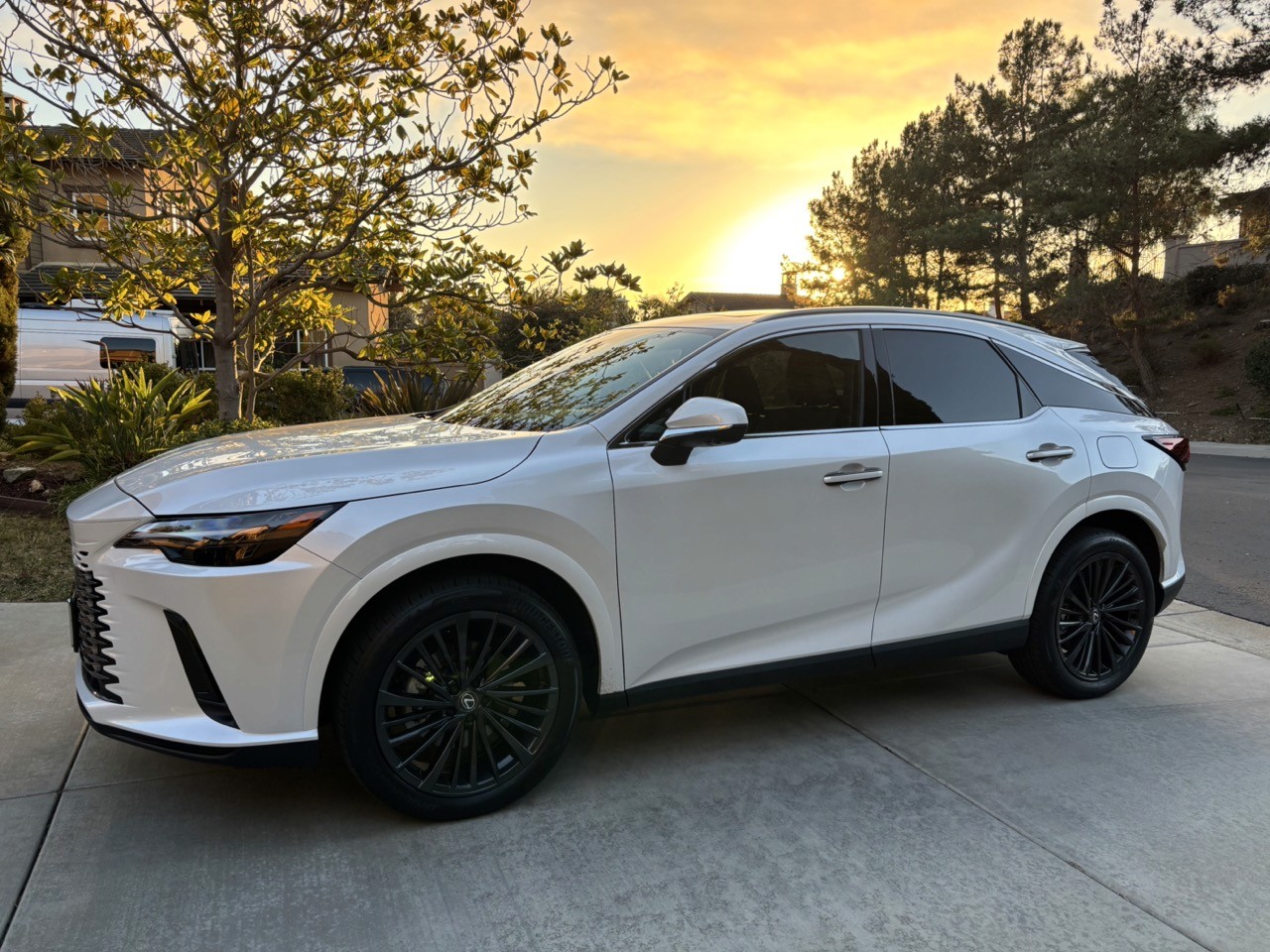Lease vs. Buy in California: What Consumers Need to Know in 2025
Written By
Peter O'Neil
Published
May 24, 2025
Leasing or buying a car in California? Discover how taxes, repairs, and resale risk shape the smarter choice in 2025—with data-driven insights.
Introduction
If you're shopping for a new car in California, one of the biggest decisions you'll face is whether to lease or buy. With the average new vehicle transaction price around $47,000 to $48,000, according to Cox Automotive, it’s more important than ever to understand how these options compare—especially in a high-cost state like California.
Here’s what you need to know in 2025, particularly if you live in Los Angeles, San Diego, or Orange County (e.g., Irvine or Newport Beach), where sales tax rates, repair costs, and ownership risks make leasing a very smart option.
High Sales Tax Increases Appeal of Leasing
California’s statewide base sales tax is 7.25%, but most areas add local district taxes that drive the effective rate much higher. Examples:
Los Angeles: 10.25%
San Diego: up to 8.75%
Irvine / Newport Beach: around 7.75%–8.75%
Source: California Department of Tax and Fee Administration
For Californians who frequently upgrade their vehicles every three to five years, leasing offers a major tax advantage. Unlike in some states like Arizona—where you receive a sales tax credit on trade-ins—California taxes the full purchase price every time. That means buyers are repeatedly paying tax on the full value of each new car.
By contrast, when you lease, you only pay sales tax on the monthly payments, not the full vehicle price. Over time, this can lead to substantial tax savings—especially in high-tax areas. For example, buying a $48,000 vehicle could trigger $4,000–$5,000 in upfront sales tax, while leasing spreads that tax across the term with lower exposure if something happens to the car.
However, with leasing you are also paying sales tax on the money factor—which is essentially the interest portion of the lease. Unless the money factor is zero, you're paying tax on the cost of financing too. Still, for those who tend to replace cars every few years, the tax savings often outweigh the difference, making leasing a financially strategic choice.
Lease Payments Are Lower—and More Predictable
According to Experian’s Q4 2024 Auto Finance Report:
Average monthly lease payment: $600
Average monthly loan payment: $742
That’s a $142/month savings, or over $5,000 across a 36-month lease.
But the comparison goes beyond just the payment. When you lease, that $5,000 saved stays in your pocket—money you can put toward other goals, investments, or simply keep as a cushion.
Many buyers assume that purchasing a car means building equity, but in reality, there is often little to no equity in the first 36 months of a standard car loan. Most car loans now stretch 66 to 72 months, per Experian data, and because of steep early depreciation and higher interest charges front-loaded into longer loans, buyers typically remain upside-down longer than in years past.
By contrast, lease terms are aligned with the car's depreciation curve and include a predicted residual value, which is usually what the manufacturer expects the car to be worth at wholesale after three years. That means:
You’re effectively only paying for depreciation and finance charges
You have the option to buy the car at wholesale if market conditions favor it
You avoid the risk of being upside-down in the middle of a long loan
Leasing offers a more predictable budget, eliminates surprise repair bills under warranty, and sidesteps the common trap of being in a low-equity position halfway through a 72-month loan.
Depreciation & Resale Risk: Who Should Carry It?
Cars are depreciating assets. Most lose 20%–30% of their value in the first year, and up to 50% within five years. That depreciation affects both buyers and lessees—but in different ways.
For lessees, vehicles with higher expected depreciation typically come with higher monthly lease payments because you're financing a larger drop in value. However, if the actual market value at lease-end ends up being lower than forecasted, the leasing company—not the consumer—is on the hook for that loss.
With a traditional auto loan, if your car depreciates faster than expected, you're still responsible for the balance on the loan, even if the car's resale value falls short. Leasing shifts this resale risk to the lessor, offering more financial protection in volatile or uncertain markets.
When you lease, the leasing company carries the depreciation risk. If used car values fall, you’re protected.
Conversely, if the car ends up being worth more than forecasted, you can buy it at lease-end for the residual value—a predetermined amount stated in your lease agreement, usually based on the forecasted wholesale value. This functions as a purchase option:
You can return the car at no penalty if values drop
Or buy it at a discount if it’s worth more than expected
That flexibility is unique to leasing and gives consumers an edge in a volatile resale market.
Warranty Coverage and Long-Term Reliability Risk
Most leases fall within the manufacturer’s bumper-to-bumper warranty (typically 3 years or 36,000 miles), which means:
Major repairs are covered, unless due to negligence
Out-of-pocket costs are minimal, giving peace of mind
Some brands go further:
BMW Ultimate Care includes scheduled maintenance (per factory recommendations) for the first 3 years or 36,000 miles
Lexus includes complimentary maintenance for the first 2 years or 20,000 miles
Once a car is out of warranty, repair costs can spike—and this is happening more often. According to Travelers Insurance, maintenance and repair costs rose 10% between 2023 and 2024, and the Minneapolis Fed reports a 17% increase year-over-year. CCC Intelligent Solutions finds the total cost of repair rose 3.7% in just the first half of 2024.
As vehicles age—especially past the 7-year mark—repair costs can rise dramatically. Today’s cars are more technologically advanced and tightly integrated, which means higher labor times and parts costs when things fail. According to industry data, the average claim to "make a damaged car good as new" has increased by 36% since 2018, driven in large part by labor shortages and more expensive components.
Examples of common repairs on older vehicles include:
Catalytic-converter replacement: ~$1,348 on average—especially common on high-mileage California vehicles with start/stop systems.
Turbocharger repairs: $1,600–$2,600. A Ford EcoSport turbo rebuild runs around $1,800–$2,600; an F‑150 EcoBoost turbo costs ~$1,600–$1,900.
Electric seat module repairs (luxury): Roughly $1,000 for a Mercedes E350; many BMW and Audi models are similar.
EV battery pack replacement: $6,500–$9,500 for a Nissan Leaf depending on battery size, plus ~$1,000 labor. These costs may not be covered if damage occurs outside of warranty.
The takeaway? A single out-of-warranty failure could cost as much—or more—than an entire year of lease payments. Leasing helps drivers avoid this volatility, staying within factory warranty coverage for the full term and protecting their budgets from aging-vehicle surprises. By contrast, a lease on a new car usually stays under factory warranty for its entire term, so the lessee never pays these repair bills
Final Thought
In 2025, leasing isn’t just about convenience—it’s a powerful tool for managing uncertainty. Between California’s high taxes, rising repair costs, and increasingly complex vehicles, leasing offers budget predictability, lower risk, and peace of mind.
If you’re weighing lease vs. buy, look at your total financial picture—not just the monthly payment. Leasing can be especially appealing for those who value financial flexibility, want to avoid out-of-warranty risks, or simply prefer a predictable driving experience every few years. When done smartly, leasing can save thousands and help you avoid surprises down the road.
If you're unsure which path makes the most sense for you, consider speaking with an expert or independent broker who can model out both scenarios. Services like CarOracle can help Californians weigh all the local tax implications, lease programs, and ownership goals to find the option that fits best.














